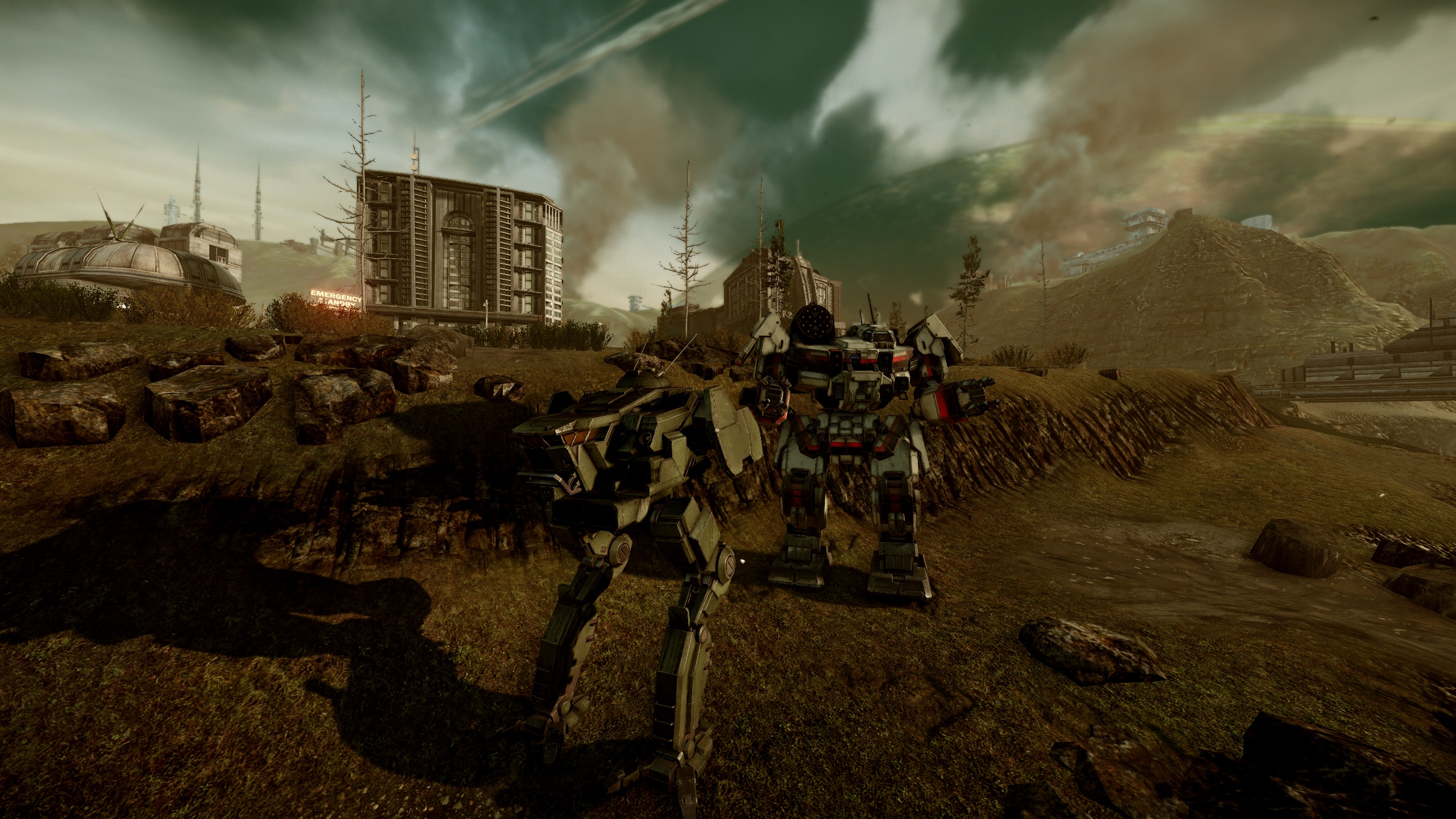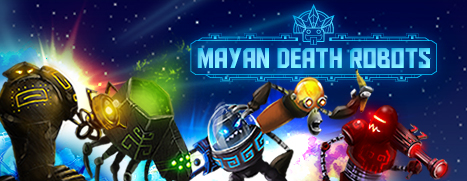Sunday Blast From the Past: Sword of Aragon (1989)
I decided to break out a part of my SSI retrospective to talk about one of my favorite games from SSI, Sword of Aragon. I did a bit of playing it the last couple of days, and I felt like I was a teenager again. Why so much nostalgia? Because it did things RIGHT, and was always a challenge. Need to know more?
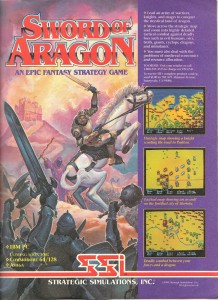
Sword of Aragon was one of the first fantasy based strategic wargames I can remember, and it let you start small, before slowly ramping up the difficulty. Your character is the son of the late duke of Aladda, who was killed in battle defending the town against a rampaging Orc army. There’s no time for your character to grieve, however, as the orc army is reforming and your leadership is needed to drive the orcs away, and restore Aladda to glory and to one dayunite the broken Aragonian empire once again!
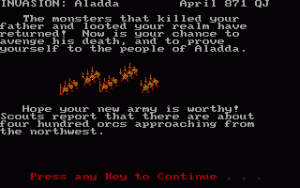
You start by choosing one of five “hero classes” (Warrior, Knight, Ranger, Priest, Mage). The hero class you choose gives you a bonus, either a cost reduction in building and equipping units of a similar type (for example, Warriors get a cost reduction in Infantry units, while Knights get a cost reduction in cavalry), or the ability to cast spells (Priest/Mage). Once you select a Hero class, you’re offered the opportunity to build your own units from the available manpower, or go with the computer suggested units. Then it’s time to defend Aladda against the rampaging orc army!
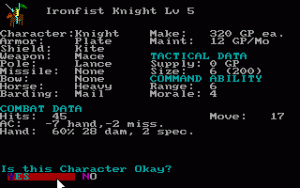
The combat is hex-based, and fairly nuanced. Units are differentiated by level (fighting ability), weapons (be it melee or ranged), mounted (and if their horses are barded), and how many hits it takes to remove one member of the unit. You have to watch units’ Morale carefully. Your super unit may be able to destroy many opposing units… however if they take a shock result in combat, or just from the sheer numbers of the enemy, they lose Morale, and may eventually break and attempt to flee the battlefield. Thankfully heroes (like yourself and other hero classes you recruit) provide a Morale Bonus each turn to nearby units, and certain priest spells can restore Morale to a unit.
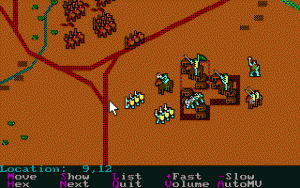
Combat depends on several factors, the unit’s ability and weaponry, their numbers (so sometimes you will see Goblins and other units rush you in a mass combat, hoping to overwhelm you with sheer numbers), and the tactic chosen by the attacker. (For example, Overrun combat favors Knights attacking Infantry, which can break a standing infantry unit and then run down the survivors one by one, but if the infantry is solid, the Knights are going to take a hell of a beating.) This is all numbers based (again, this is a 1989 game, you’re not going to see something out of the Total War series. Each member of a unit takes up a certain amount of space, so this prevents a super blob unit, (the limit is 100 for non-mounted units, and 40-50 cavalry, depending on horse type). There’s also bonuses for being in a fortified square, such as a town or city.
Should you survive the first battle, and take up the reigns of the new Duke of Aladda, you must not only grow the city and defend it against those who would turn a covetous eye against it, but perhaps those other cities should prosper under YOUR reign, instead. There’s a decent story being told (for example, one of the cities to your Northwest, is in a state of near-anarchy as the game begins, the army has turned against the populace of the city, and the elderly Duke can’t stop it (because then everyone would desert due to the low wages he can afford to pay). So, you have to make a decision on whether to conquer it yourself in the name of protecting the populace, or make a deal with one of the factions to be a vassal to your city (which provides you a monthly gold infusion).
There’s also small bits of story in leading your cities, there are bits where you can pardon a man who is accused of murder (but he and the populace swear he would never do such a thing), if you over expand your lumber production, the elves may request that you cut back as a sign of good faith (and if you refuse, they become hostile). They lead to bonuses in city morale, or a gold bonus or penalty, as well as the diplomatic effects. There are scheming cities who will attack you if they think they can win, and cities that just want to be left alone. there are even cities populated by Monsters, where you have to have several good units to have a ghost of a chance.
Of course, should all go well for you and your merry band of heroes and units (as the game progresses, you can use the money and available workforce to either reinforce existing units or make new ones, as well as hiring new heroes, depending on your level.), you will quickly start growing your own empire, as you conquer new cities, and have to manage multiple cities at the same time, which adds another strategic layer to the game. You’d like to reinforce the Garrison in one city, but there’s rumors that the city to the south of you is begging for a savior. You always have to keep track of the season, however, as harsh winters make moving armies openly a foolhardy proposition.
But, the game’s overarching story requires you to reunite the Aragonian empire by reclaiming the former capital, now a home to a massive monster army, and find three artifacts of the Aragonian Kings, to prove your right to rule the land, and bring peace to the realms!
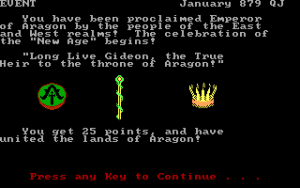
I still love this game, because it mixes so many genres together. You have RPG elements, Fantasy Wargame elements, City Management elements, and 4X elements all blended into a massive smoothie of greatness. But of course, there are some niggles.
As you can tell from the character shots above, the game is HEAVILY number based, and can quite frankly be overwhelming at first. There’s a sweet spot of numbers that can be found , but some people will not be around long enough to appreciate it. And of course, the game is now entering its 27th year of existence. That’s older then a lot of my readers, so the graphics are.. well they weren’t exactly state of the art in 1989, so you can imagine what people would say in 2016.
Also, because this was the late 80’s, you couldn’t release a game without a ridiculous copy protection system, could you? They didn’t stint here, it’s even a TWO factor copy protection system, when the game boots, they show you a picture of a city, and ask you for a certain feature (such as their economy, etcetera) about it, and you have to identify the city by its shape using the poster that came with the game, then look up the city in the manual and enter the word. Failure three times dumps you out back to DOS. Which just proves that games come and go, but ridiculous copy protection systems are forever.
The game has not been commercially available in over a decade (the last release of the game was in 2000, as part of the “Twenty Wargame” collection), but is widely available through dubiously legal “Abandonware” sites (if you find one, try to find one that removes the copy protection system). There have been on-again, off-again rumors of a remake, and it’s a game I wish would be remade, it hits so many sweet spots for me.
Now if you excuse me, my Level 10 Knight has an appointment to remove that scheming bastard “Lord” Pitlag from his throne.
